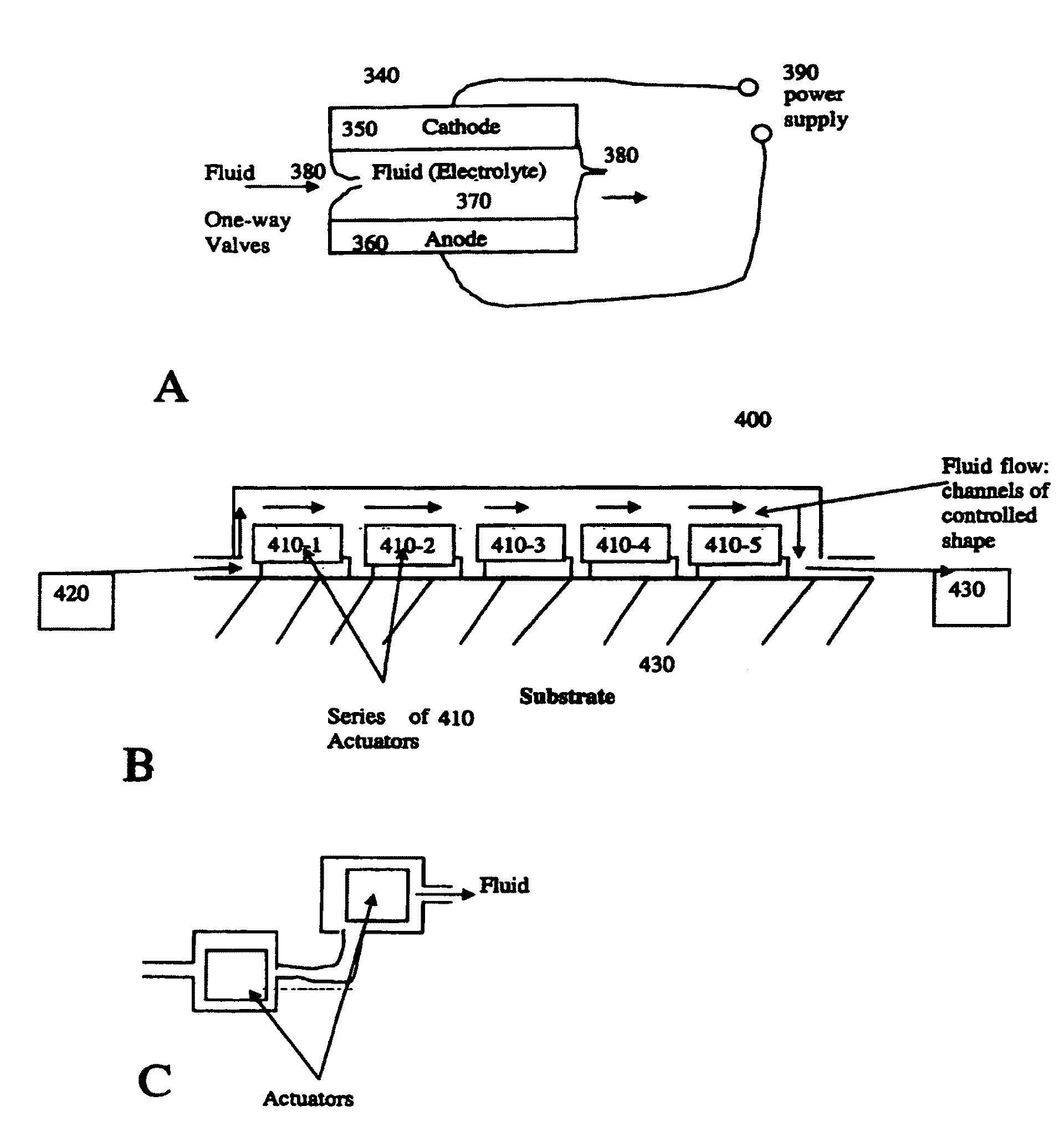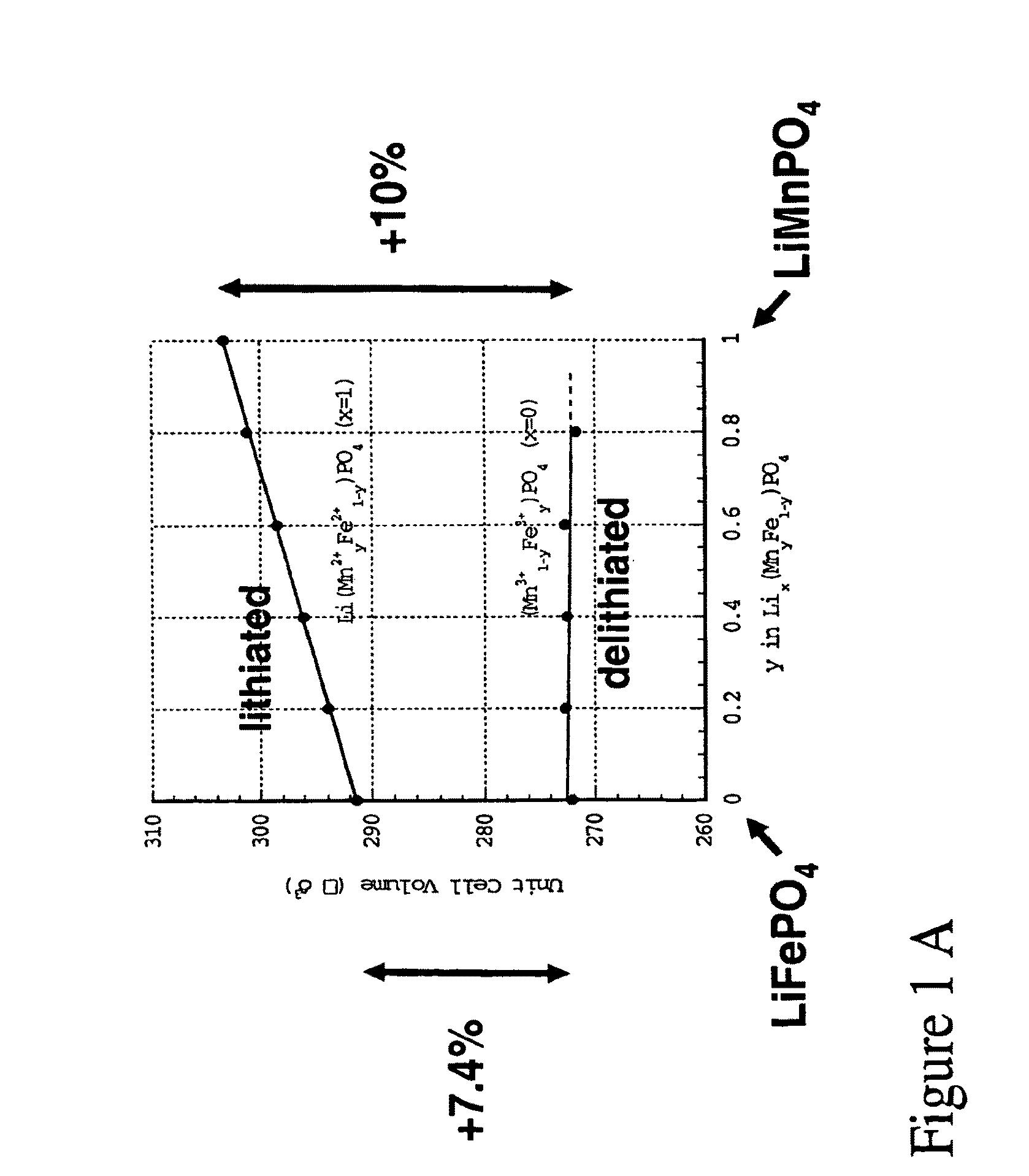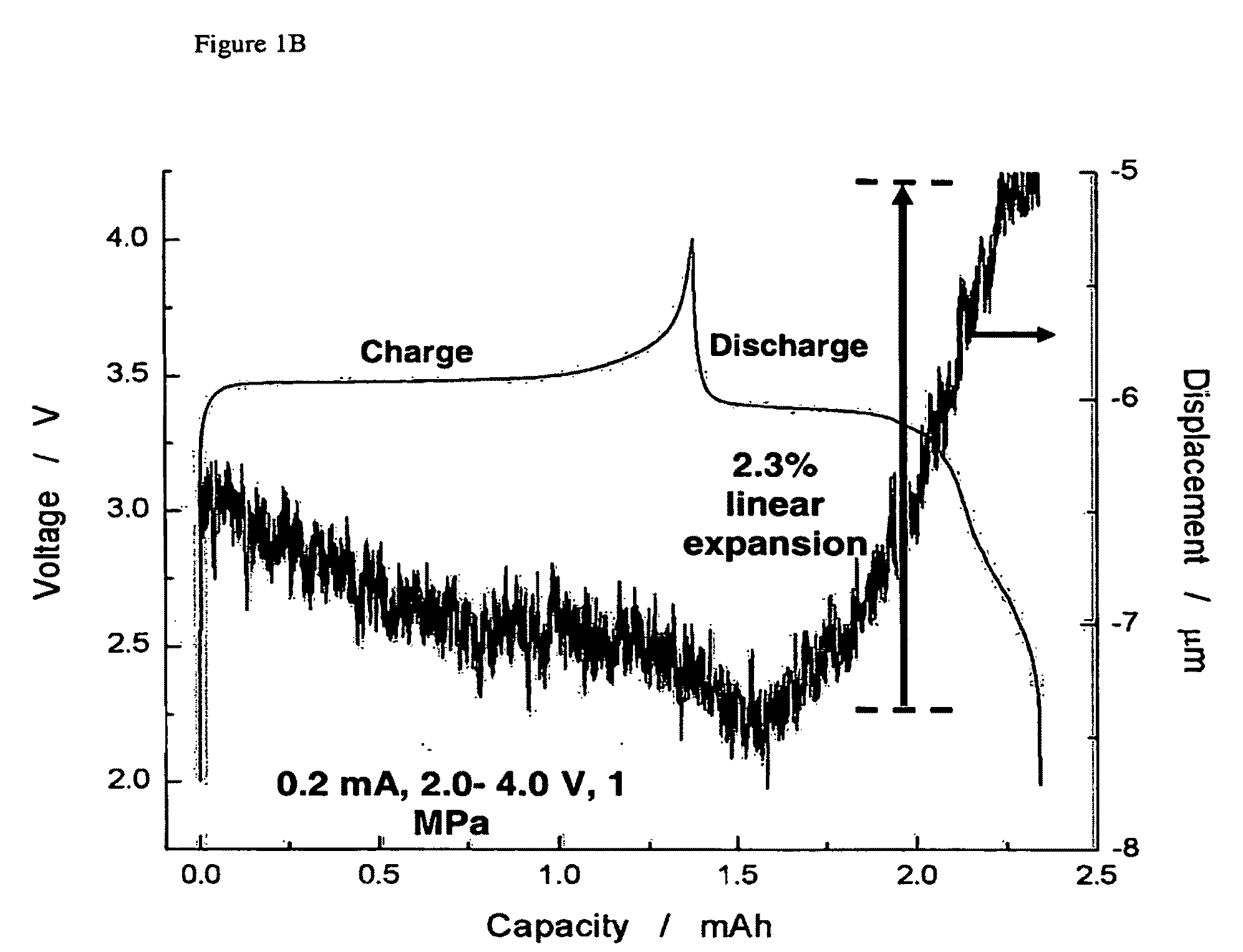Electrochemical methods, devices, and structures
a technology of electrochemical actuators and electrochemical methods, applied in the field of electrochemical actuators, can solve the problems of insufficient actuation capability, slow response, application that has not produced ideal results, etc., and achieve the effect of high strain
- Summary
- Abstract
- Description
- Claims
- Application Information
AI Technical Summary
Benefits of technology
Problems solved by technology
Method used
Image
Examples
example 1
Electrochemical Actuator Utilizing LiFePO4-Based Electrode and Porous Ceramic Separator
[0202]FIG. 1, from Yamada [J. Electrochem. Soc., 148, A224 (2001)] shows the volume changes that occur in the olivine structure compound (Fe,Mn)PO4 as it is lithiated to the end-member composition Li(Fe,Mn)PO4. Between the fully lithiated (upper curve) and fully delithiated (lower curve) limits of composition, a volume change of 7.4-10% (linear strain of 2.4-3.2%) is realizable depending on the Fe / Mn ratio. FIG. 4 illustrates a design of electrochemical actuator in which a positive electrode is used with a porous alumina separator of high stiffness and load bearing ability. The negative electrode comprises Li metal, which is deposited within the pores of the porous load-bearing actuator so that it is not load bearing, while still providing a source and sink for Li ions during the operation of the actuator. An actuator of this design was constructed using a positive electrode for a rechargeable lit...
example 2
Multilayer Stacked Actuator Using LiCoO2 and Carbon as Active Materials
[0204]In FIG. 1C, actuation is shown in a multilayer stacked actuator in which the positive electrode is LiCoO2 and the negative electrode is carbon. These devices are commercially available batteries fabricated according to the “Bellcore” gel-electrolyte technology in which positive electrode and negative electrode layers (about 30 layers total) are bonded together with a bondable separator film, following which the multilayer stack is packaged in polymer. Typical cells are shown in FIG. 2. The laminates are oriented normal to the plane of the cell. This battery is elastically soft due to the materials used; it is a relatively low energy density device containing a large fraction of soft polymer components to facilitate manufacturing. The cells were tested in the as-received state with no preconditioning prior to electromechanical testing. The cells were tested in an apparatus designed to apply a constant pre-st...
example 3
Multilayer Stacked Actuators and Preconditioning for Improved Performance
[0206]Multilayer stacked actuators can have several different internal constructions, as exemplified in the following. FIG. 5 shows several lithium ion rechargeable cells based on LiCoO2-carbon chemistry, each of which has a different internal construction. Each of these designs was demonstrated to be capable of performing substantial mechanical work, and furthermore, to have improved performance after preconditioning treatments described herein.
[0207]Several samples of each cell were double-vacuum-bagged in plastic and placed in an isostatic press, and the pressure raised to 45,000 psi and held for 5 minutes. After testing, the open circuit voltage of the cells was measured, and all cells were found to have survived the pressure treatment without suffering an internal short. The capacity of the batteries changed only slightly after the isopressing treatment, showing a reduction in capacity measured between 3.0...
PUM
| Property | Measurement | Unit |
|---|---|---|
| thickness | aaaaa | aaaaa |
| actuation energy density | aaaaa | aaaaa |
| actuation energy density | aaaaa | aaaaa |
Abstract
Description
Claims
Application Information
 Login to View More
Login to View More - R&D
- Intellectual Property
- Life Sciences
- Materials
- Tech Scout
- Unparalleled Data Quality
- Higher Quality Content
- 60% Fewer Hallucinations
Browse by: Latest US Patents, China's latest patents, Technical Efficacy Thesaurus, Application Domain, Technology Topic, Popular Technical Reports.
© 2025 PatSnap. All rights reserved.Legal|Privacy policy|Modern Slavery Act Transparency Statement|Sitemap|About US| Contact US: help@patsnap.com



